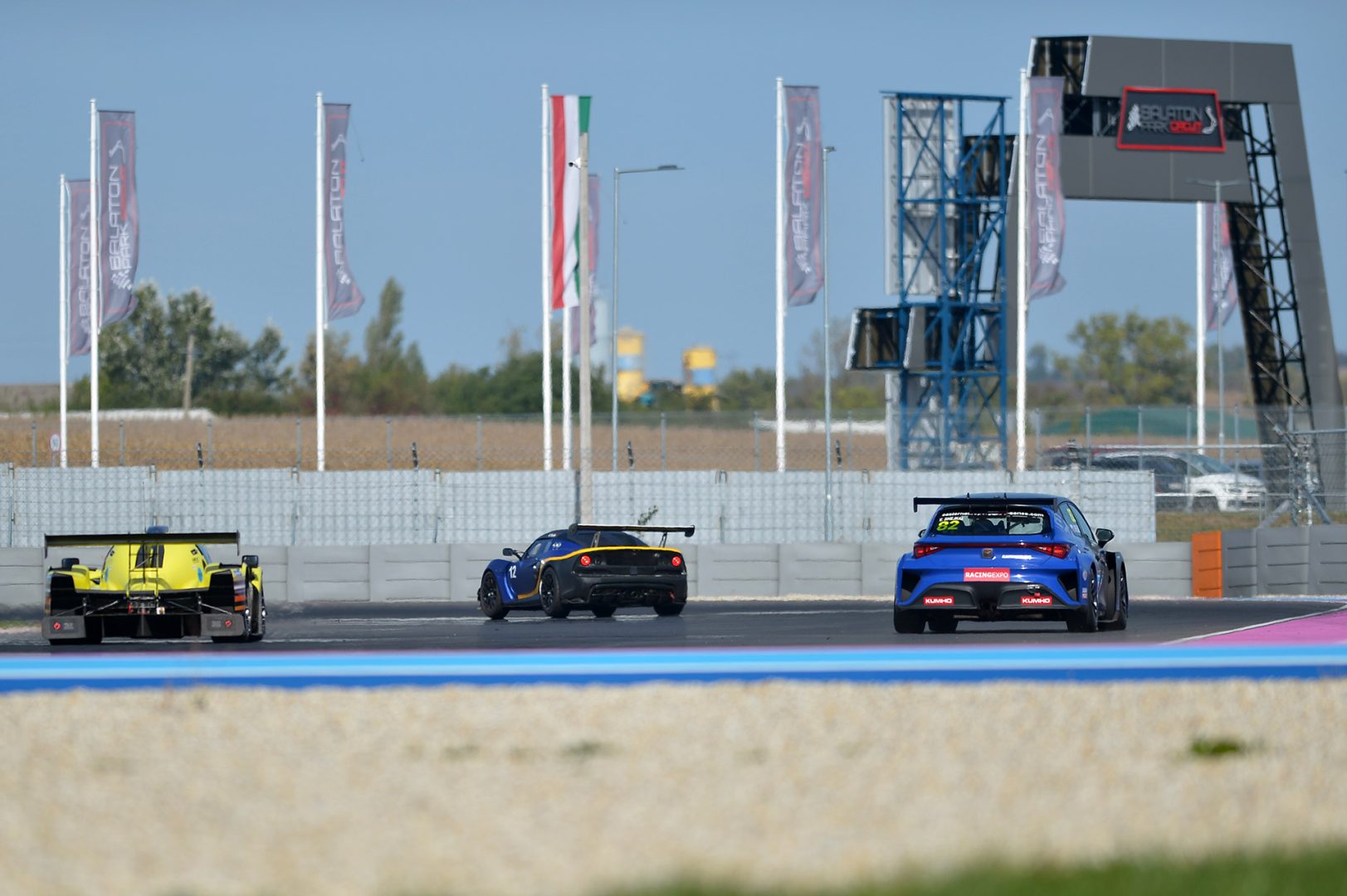I’ve been talking with Burkus Egon, the head of GFS Motorsport, for at least 3-4 years about trying out the Lotus Exige V6 Cup-R race car. I got the opportunity now! I was thrown into the deep end right away, starting my acquaintance with an unfamiliar track, an unknown car, and tires during the qualifying session. But in the end, everything went well.
The new hungarian racetrack, the Balaton Park Circuit, was completely unfamiliar to me, and I must admit that I hadn’t practiced it even on a simulator because we couldn’t find a suitable high-quality version, especially not for a hardcore simulator. Based on onboard videos, I did manage to figure out the layout of the track. Finding the ideal racing lines is a big task, as this track offers multiple ways to approach many corners. Moreover, a significant part of my racing career has been with front-wheel-drive cars, so it took me about 4-5 laps to mentally piece together what needed to be done. Fortunately, I learn tracks quickly, and I improved throughout the entire weekend. The track itself is excellent, but everyone still needs to learn it because it’s tricky.
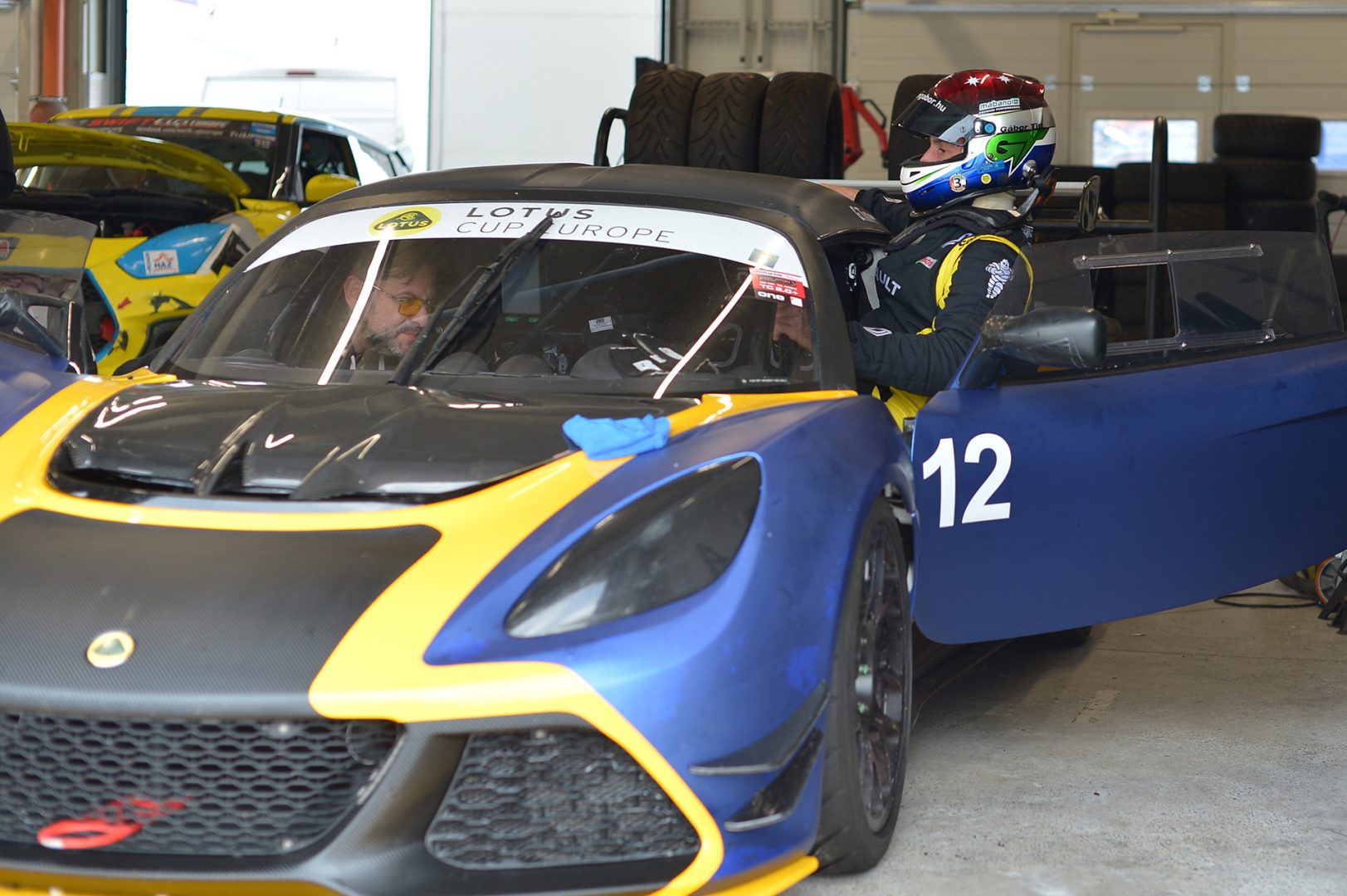
The car was unfamiliar to me. Getting in was not an easy task either. It might not come across in pictures, but this car is incredibly low. Essentially, the seating position and height are similar to a formula car. It took a while for me to get used to having so little space in the car.
The performance of the Lotus Exige V6 Cup-R is impressive. I’ve never driven such a powerful car before. It has approximately 370 HP and 400 Nm of torque. However, it’s not designed for full slick tires; it runs on what are called semi-slick tires. Full slicks cannot be used on it without significant modifications to the car.
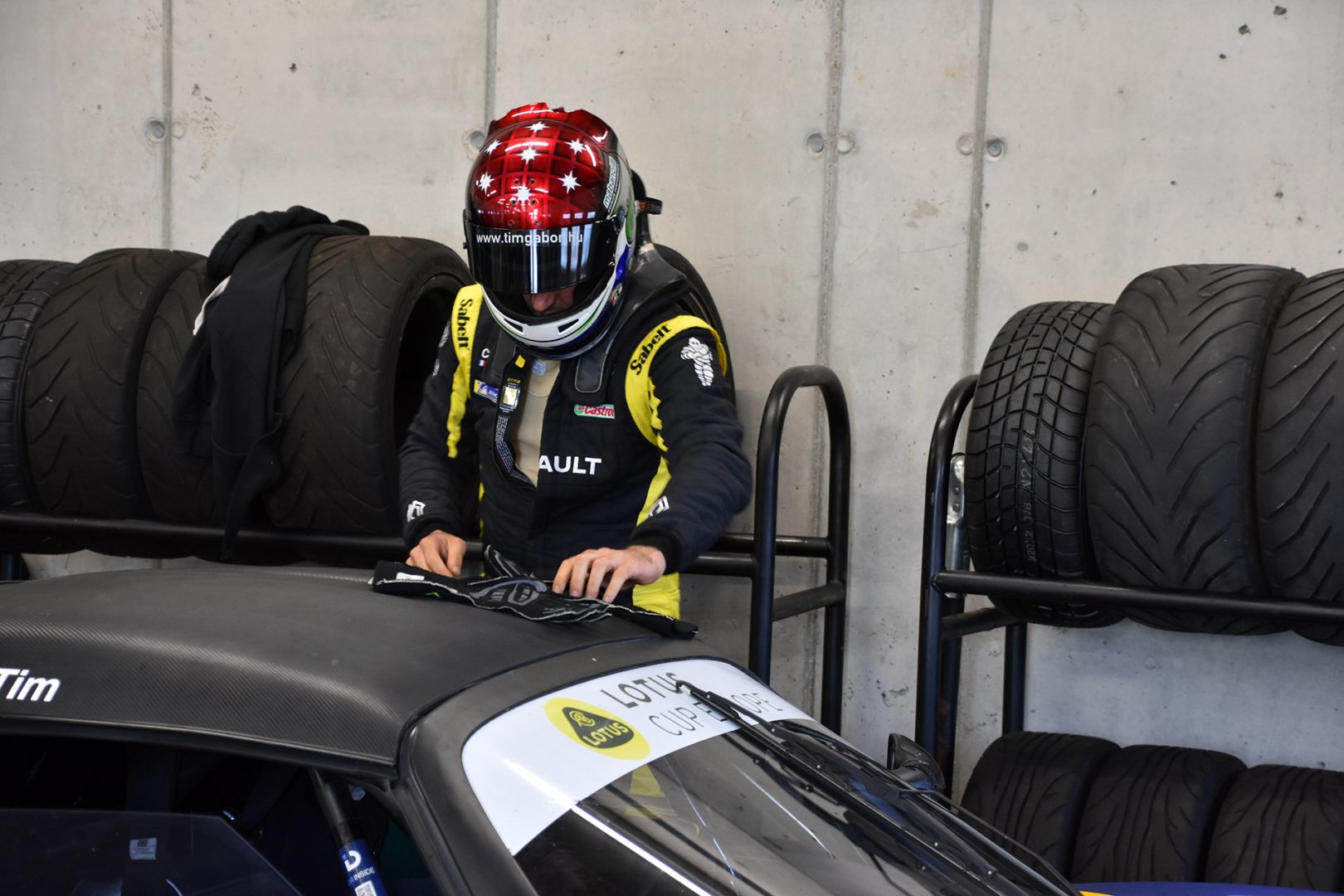
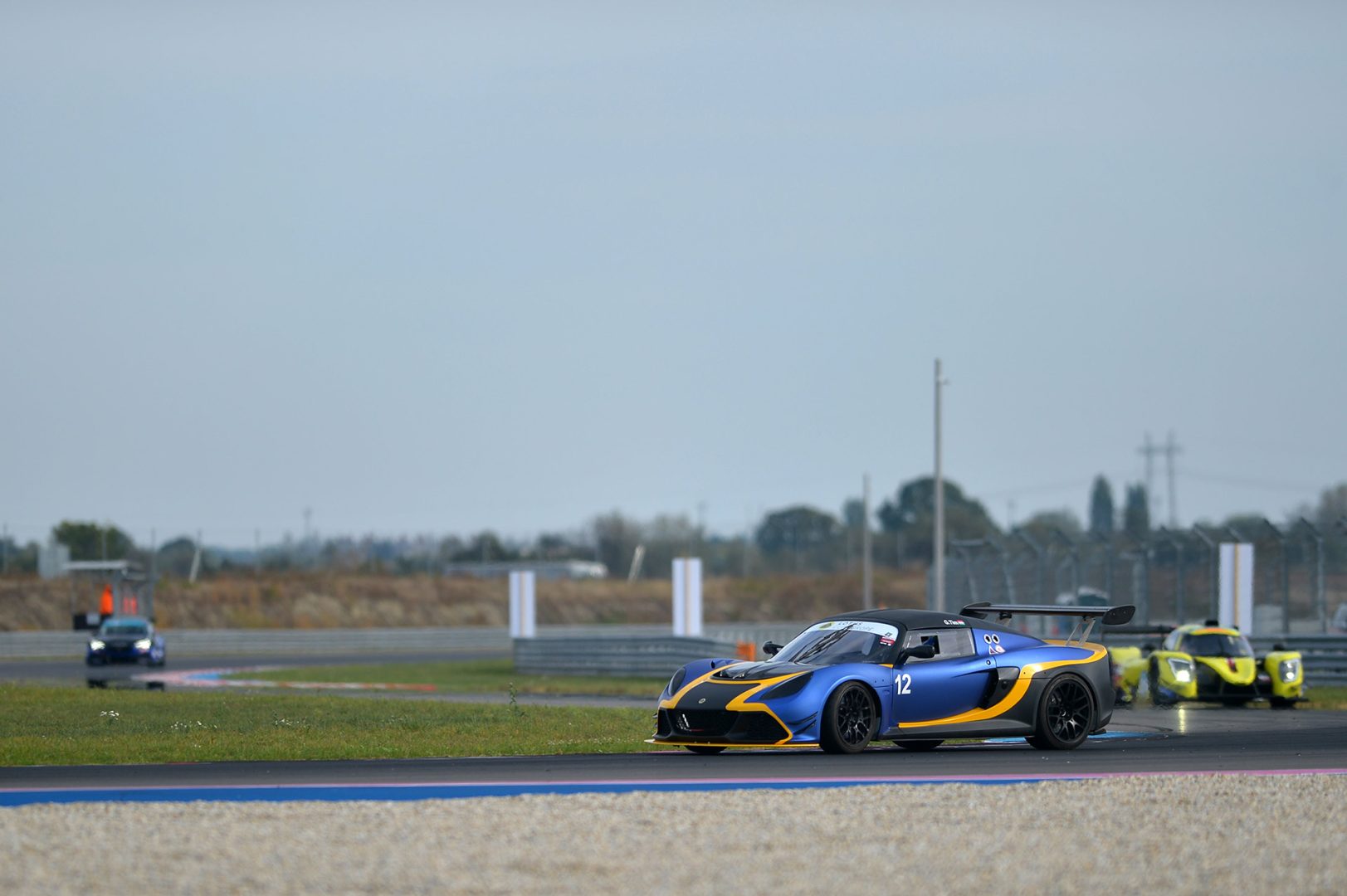
The advantage of semi-slick tires is that they reach their operating temperature almost immediately, but their grip is not as good as full slick tires. In the touring car category, everyone except me used slick tires, so I had to be smart about it because I had a significant disadvantage in braking distances. My car had three-year-old tires, and even with new ones, I wouldn’t have been much faster, so it wouldn’t have been worth spending money on it.
A total of 10 cars entered the Balaton weekend in the touring car category, which can be considered not many. However, it turned out that, apart from the three Clio Cup cars, everyone had a similar pace, making the races very exciting. My main competitors were the TCR cars, and I was faster in the straights, while they were quicker in the corners and especially under braking. I was also able to compete with Adam Konopka in the Porsche 991 GT3 Cup, which was surprising because it’s a significantly more powerful car. The older Konopka, in an LMP3 car, was in a different league, essentially lapping everyone in the 25-minute races.
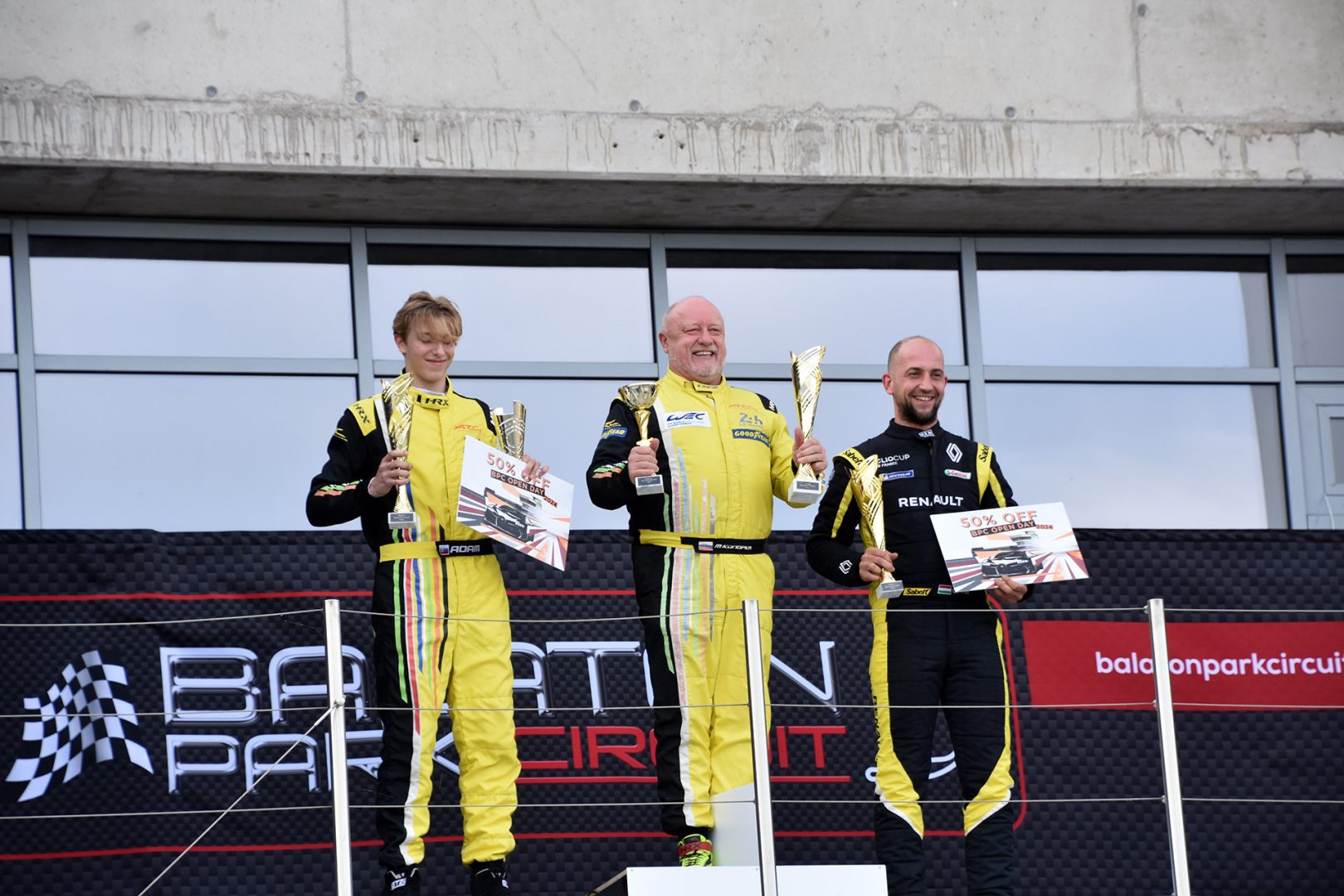
I started the first qualifying session conservatively as I didn’t know the car or the track. I kept pushing consistently, and it helped that GFS provided me with a perfect car, so I didn’t have to worry about anything. I finished the qualifying with a time of 1:48.639, leaving a lot on the table, but I didn’t want to take any unnecessary risks. It placed me 7th for the first race. Once, a well-known and experienced racer told me that you should build from the bottom. You can build from the top, but it’s expensive. So, I kept increasing the pace lap by lap and pushed my limits.
In the first race, I jumped to fifth position, and due to a dropout, I was able to defend my fourth place against one of the TCR Cupras throughout the race. I had an advantage on the straight, and my opponent couldn’t attack. I improved my best lap time during the race, with the laptime stopping at 1:48.086.
In the second race, I jumped to the second position, which surprised me as we had rolling starts where rear-wheel drive doesn’t have as much of an advantage. Two TCR cars, Bálint Hatvani and Petr Cizek, overtook me, but they collided, and I regained the second position. I managed to hold off the smaller Konopka until halfway through the race, but eventually, the Porsche driver overtook me. I finished in third place, successfully defending against the TCR cars. In the second race, I was able to consistently run laps in the 47-second range.
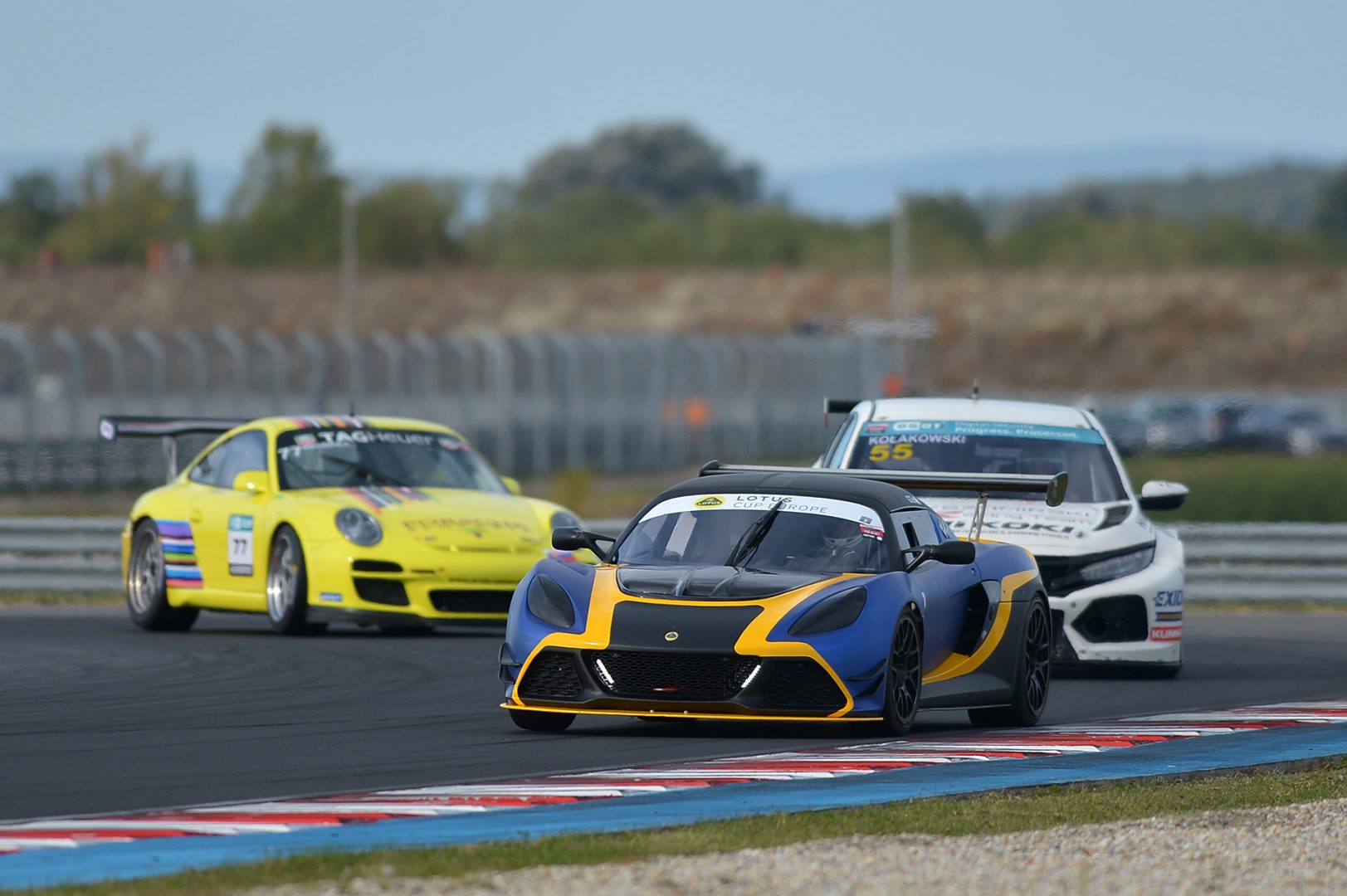
On Sunday, there was another qualifying session. We put new tires on the rear, but it didn’t help. The car became understeer, but I still improved a lot, with a time of 1:47.424, finishing third. The two Konopkas didn’t participate, so it was the Lotus vs. TCR battle that remained.
In the third and final race, I managed to bring the car in second place, finishing just three seconds behind the leader. The lap times were good, and I handed the car back with satisfaction. I had to take good care of it since there’s already a buyer for it. I hope this helped with the decision that it’s worth buying; it’s a great car.
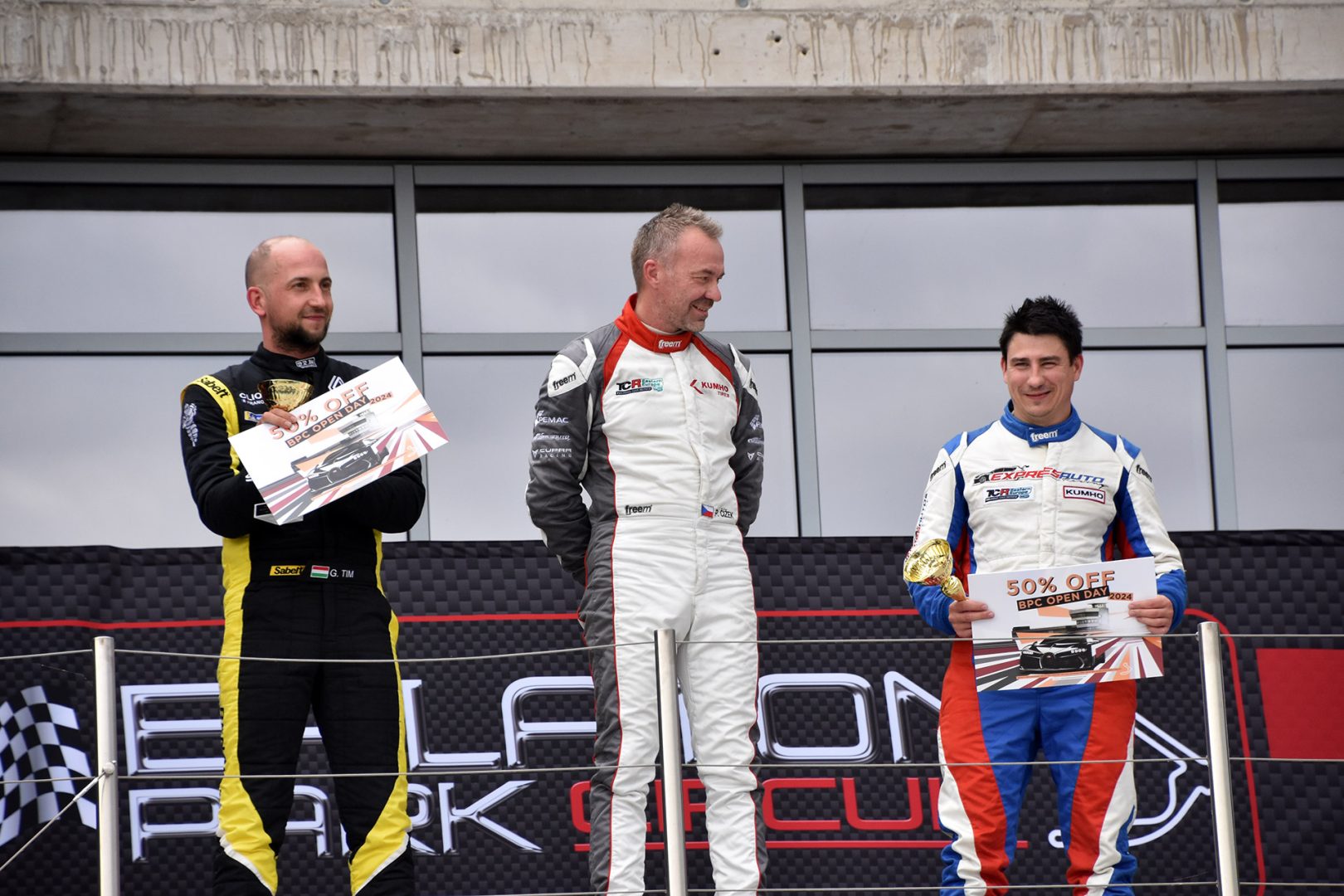
Finally, I would like to address those who supported me this year. Unfortunately, no stickers or logos could be placed on the car, as that was the agreement, so I couldn’t display your names or the logos of the supporters. I would like to make up for this at the year-end Szilveszter Rally. If the car is ready, we will also make up for the promised ride. We are close to completing the car.
The weekend adventure highlighted an important aspect that my manager has been suggesting for a long time. Maybe I need to focus my career on rear-wheel-drive cars? Well, this will become clear in the near future. There are plans, but not much money, but you know… I’ll never give up.
